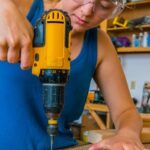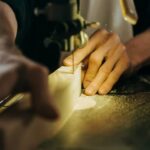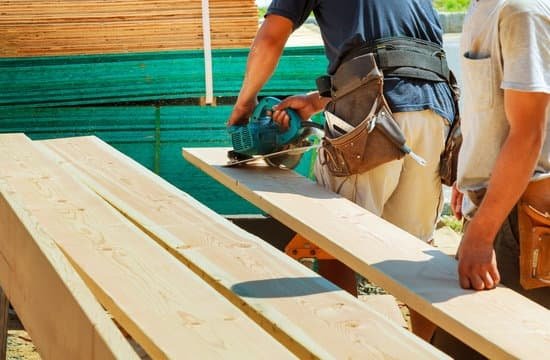Introduction
The Woodwork Merit Badge is one of the oldest and longest standing merit badges in the Boy Scouts of America (BSA). Since its introduction in 1911, it has been designed to teach Scouts necessary skills for woodworking and carpentry. Through this badge program, Scouts learn about a variety of topics, including safety when working with wood, basic woodworking techniques, understanding forests and trees, finishing techniques for wood surfaces and furniture design. Earning the Woodwork Merit Badge can open up a range of opportunities for Scouts to pursue their interests in carpentry through projects at home or within their troop. After earning the badge, many Scouts have gone on to work in professional settings as carpenters or cabinet makers. Today, it is estimated that more than 2 million young people have achieved the Woodwork Merit Badge during the course of BSA’s history.
Understanding the Requirements
The Woodwork Merit Badge is an important accomplishment for Scouts looking to eventually become Eagle Scouts. In order to earn this badge, Scouts must demonstrate a set of skills related to woodworking and carpentry. The ability to safely use tools and the knowledge needed to construct projects correctly are just some of the areas that must be mastered in order to complete the requirements.
In addition to learning how to work with wood safely, there are several other components required for earning the Woodwork Merit badge. These include understanding the basics of tool maintenance, as well as being able to properly measure materials when constructing a project. Woodworkers will also need to learn about different types of woods, their properties, and how they can be fashioned into useful objects. Additionally, metal-based items like nails and screws will likely be involved in some way with most woodworking projects that have been completed for this merit badge. Finally, scouts must understand proper finishing techniques by sanding and painting the completed project professionally before presenting it for inspection by an approved counselor or scout leader for their official confirmation of completion.
Getting Started
Woodworking is a fun, rewarding hobby that just about anyone can enjoy. Before you get started, you’ll need to make sure you have the proper workspace and tools. A well-stocked woodworking shop includes many essential items such as power tools, hand tools, safety gear, clamps and layout tools – all of which help make your projects successful.
Power tools are an important part of any woodworking shop. Having the right collection of power tools will help ensure that your projects turn out as planned. Handheld drills, table saws, band saws and other basic power tools will cut through most types of wood quickly and easily while more specialised items such as routers can create beautiful details on your pieces. When selecting these power tools look for items with adjustable speeds and multiple blade or bit options in order to tailor them to your project needs.
Safety gear must also be part of any woodworking workshop setup. Safety glasses should be worn at all times while working with wood or hazardous materials; also make sure that your feet are properly protected with steel-toed boots or similar protective footwear. You’ll also want to lay down protective mats in work areas where large pieces of stock may be stored in order to reduce slipping hazards from loose chippings or sawdust build up on the floor surface. Finally a dust mask or respirator should always be used when sanding or otherwise disturbing any kind of particulate matter – either in the air or sitting on top of an unfinished workpiece surface.
Clamps are a must for any woodworking project regardless of size – from small boxes to large furniture pieces; they hold everything together while glue sets and provide support around joints during cutting operations like lap cuts even mitred corners need a little clamping action every now and then! Consider investing into two different types: parallel clamps (better for wide spread clamping force) along with F-clamps (handy for closing tight gaps between parts).
It’s important to have the right layout toolswhen starting out in woodworking too – tin snipsare great for straightening edges while trammelpoint settoolswill assist with drawing circles perfectly concentric pathscan be laid out by using radius gaugesand draftsman squares will help keep it all square! Investing in some precision measuring instruments such as Vernier caliperswill give you accurate readings down to 0.001″. Lastly, protractors will aid in finding exact angles as well as other angular measurements you might need over time so adding one or two into your kit shouldn’t break the bank too much either!
Building with Confidence
Earning the Woodwork Merit Badge requires mastering a variety of skills, and doing so successfully can give youth participants a lifetime of satisfaction. To help Scouts earn this badge with confidence, three proven strategies for success should be adopted from the start:
1. Have a Plan: The first step to taking on any woodworking project is to come up with an idea or plan for what you want to build or accomplish. It is important for Scouts to visualize the end goal and consider all the steps necessary in order to reach it. Questions about tools needed, materials available, expected time or cost involved can all be answered by having a clear plan in mind from the onset of a project.
2. Take it Step by Step: Once the goal is established, it’s time to take each step one at a time. Starting with smaller projects that require fewer tools and have clearer instructions (like birdhouses) makes learning easier and builds confidence as each task is completed successfully.
3. Learn Safety First: Safety always comes first in any project involving power tools and sharp edges! Parents, leaders and professionals should introduce their Scouts to basic safety measures such as wearing eye protection and gloves, practicing good technique when using different tools, having proper ventilation when sanding or painting projects and properly disposing of off-cuts/wood shavings safely away from living things. Doing these steps will ensure that Scouts stay safe during their building journey towards completing their Woodwork Merit Badge requirement!
Safety First
Woodwork is an enjoyable and rewarding hobby, but it’s important to remember that woodworking comes with its own set of risks. Whether you work on small projects around the house or embark on ambitious carpentry tasks, always prioritize safety first. Protect yourself when woodworking by following these tips:
1. Wear protective gear ” This includes safety glasses, gloves and a face mask when necessary. If a project involves power tools, you may also need additional safety equipment like earplugs or special footwear. Working with wood produces fine particles which can quickly cause irritation if inhaled, so do not forget about the importance of protecting your respiratory system.
2. Check your tools ” Before using any tool for a project, make sure it is in good condition and proactively inspect for any defects that could impact the safe operation of your handy work.. Sticking to this habit will help prevent accidents from occurring due to malfunctioning equipment.
3. Read instructions ” Every tool is different and has its own quirks; get to know them ahead of time by reading instructions and checking out online tutorials before working with a device for the first time. Not only will this provide familiarity with a tool’s ins-and-outs, but it will give step-by-step guidance on how to use it safely and effectively throughout the course of your project.
4. Secure materials firmly ” Clamps are essential items to have close at hand while woodworking as they help secure materials in place while sawing or drilling into them; loose pieces add an unnecessary hazard during an otherwise simple task. Also, be aware of where all clamps are during a project to avoid bumping into them or knocking them off surfaces as even metal clamps can cause quite some damage if hurled dangerously across the room upon impact!
5. Dispose items wisely – When disposing machinery parts that have been cut away from larger pieces be mindful in packaging up such materials as nails or screws can present extremely sharp objects if carelessly thrown into bins without thought of safety precautions taken beforehand! Remove any fasteners from anything being thrown away and use sealed bags (or other forms), properly labelled containers for disposal items classified as hazardous waste material!
Resources and Just-in-Time Guidance
The Woodwork Merit Badge is one of the most popular merit badges among Scouts. To complete this badge, Scouts must demonstrate their understanding of woodworking tools and techniques, materials, and safety procedures.
Learning these skills doesn’t have to be done alone. There are plenty of resources available to help Scouts who are working on earning the Woodwork Merit Badge. One great resource is online courses that offer just-in-time guidance as oppose to traditional learning methods like textbooks or videos. Online courses provide an adaptive learning environment with pre-recorded lectures and interactive elements that allow learners to progress at their own pace. In addition, online courses often feature detailed blog posts or other materials that can provide useful tips and knowledge for those starting out in woodworking.
Another great resource for earning the Woodwork Merit Badge is attending group workshops hosted by experienced builders and craftspeople. Group workshops allow Scouts to get hands-on experience with a wide range of tools and techniques while learning from those more experienced in the art of woodworking. Doing so not only helps a Scout get familiar with the workshop environment but also boosts their confidence when they’re ready to tackle their own projects back home.
Finally, local woodworking stores might offer classes or individual instruction tailored specifically toward earning the Woodwork Merit Badge. Assessment is typically conducted onsite during such classes and can give Scouts insight into how well they have grasped certain concepts and skills regarding woodworking. This type of assessment allows for personalized feedback which makes selecting an appropriate next step easier for each individual Scout.
Unleashing Your Creativity
One of the best things about woodworking merit badge is the possibility for creativity. Not only can you create a variety of projects that range from simple to complex, but you can also take it one step further and create completely unique and innovative projects. In order to do this, it’s important to think outside of the box, use your imagination, and identify areas in which you need improvement.
For starters, take some time to peruse different periodicals and online sources that feature woodworking plans as well as stories about interesting projects that others have undertaken. This will give you an idea of how other people have tackled particular tasks, as well as provide some inspiration for your own work. You should also consider visiting a hardware store or craft-supply store to get ideas for creative techniques”maybe even find unexpected materials”that could elevate the quality of your project.
Why not challenge yourself by incorporating features such as decorative carving or engraving? Not only is this an enjoyable way to add personality to a piece (beyond just stain and varnish) but it will certainly accelerate your woodworking skills. Or if you’re going a bit more advanced with automated tools like routers, think about adding an intricate pattern into furniture or objects that you build such as doors or mirror frames. Expert woodworkers have even been known to incorporate LED lighting into certain pieces!
Another way to unleash your creativity while earning the woodworking badge is by repurposing items instead of throwing them away. With just a few minor adjustments one project can become something entirely new -save money on supplies; be more environmentally conscious; and give old relics new life! Whether it’s making shelves out of old boards that lie around in garages or turning recycled cans into decorative bird feeders”the possibilities are really endless for crafting something truly original with limited resources at hand!
Finishing Touches
The Woodwork Merit Badge is a great accomplishment to add to your scouting resume. After spending time researching, planning and constructing a woodworking project, you can now be proud that you have earned this requirement for the badge.
In addition to the satisfaction of completing this difficult task, the Woodwork Merit Badge will open up many career opportunities in the future. Future employers may recognize the hard work and commitment you put into gaining this badge and your dedication to formulating craftsmanship. You will also find various personal growth benefits such as self-confidence and positive thinking with regards to achieving goals that can arise from receiving this merit badge.
Furthermore, developing fundamental skills such as problem solving, following instructions carefully and mastering tools used in woodworking will help both personally and professionally in life while giving you an additional appreciation for working with your hands. With research on instrument care and maintenance, woods frequently used throughout the industry and other concepts related to woodcrafting, such knowledge has become an essential part of woodworking basics.
So when you proudly display your Woodwork Merit Badge after completion of all its requirements take a moment to reflect on how it has bettered yourself through increased confidence, skillset expansion and achieving a goal set by you. The pride in earning such an esteemed merit like this should not go unnoticed!

Hi everyone! I’m a woodworker and blogger, and this is my woodworking blog. In my blog, I share tips and tricks for woodworkers of all skill levels, as well as project ideas that you can try yourself.





